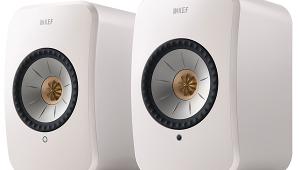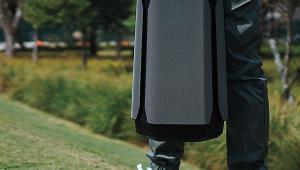Impressed with the AQ SmartSpeaker affordable price and versatile features especially the real stereo option. While audio quality may not match higher end units the overall package makes it a solid choice for those in the AirPlay speaker market.
Mold Inspection Services Georgia
Review: AQ Audio SmartSpeaker A1 AirPlay/DLNA Speaker

Another day, another wireless speaker, right? We're pretty much much drowning in post-docks here at S+V these days, and aside from preferred protocol (AirPlay, DLNA, Bluetooth, pick your poison), most of these little guys have started to seem just a tad samey-samey.
But the long-rumored AQ SmartSpeaker (it had been meant as one of the first AirPlay units, initially slated for a November 2011 release) got my attention. AQ seems to have spent the additional time to market wisely
The SmartSpeaker (the A1; there's also an A2, which is identical save for the fact that it lacks a battery) is a smart little package, putting together a lot of simple to access functionality in a low-cost package that actually sounds good. And if you pick up two (which is a realistic possibility given the relatively low cost) the pair can even be configured - so long as your source is iTunes - to do real stereo!
Setup
With so many options on tap and such a minimal control panel (there's no display, just a couple of buttons and an LED up top) setting up the SmartSpeaker could be confusing - but thankfully, it isn't While holding down buttons and watching for shifting blink patterns in LEDs isn't my preferred setup interface for wireless products, I have to hand it to AQ Audio for providing a detailed manual (and a series of video quickstart guides, available via the company's Web site) that makes it about as painless as I could imagine.
Where to start? AirPlay, AirPlay direct (logged into the devices own Wi-Fi network, you can use AirPlay anywhere), DLNA/UPnP (via the AQPlay app for Android or Play To from Windows 7 or 8 or Windows Phone). The possibilities are endless…about the only thing missing is Bluetooth. The concept resembles what we saw in the (admittedly somewhat better sounding - per individual unit - and better built) Aperion Aris, but at a lower price point and (if you pick up a pair) with the option for real stereo separation, so long as you stick to AirPlay on the desktop or laptop (well, AQ does suggest a workaround using Rogue Amoeba's Airfoil software that will let you stream from your iOS device to your Mac or PC and then to a pair or group of AQ SmartSpeakers, but that still involves having a computer in the mix.
While it can interact with a number of sources, you can set up the SmartSpeaker in two basic ways: "Connected Mode" (in which the AQ joins your existing network as an AirPlay/DLNA client and is accessible to any computer for playback); or "AQ Direct" mode, in which it sets up its own wireless network - letting you use AirPlay, for instance, wherever you want, without the need for a connection to the internet (think Bluetooth, as we'd mentioned in the case of the similarly endowed Libratone Zipp).
If you want to join an already extant Wi-Fi network, you can connect an iOS device to the SmartSpeaker via USB and have the speaker copy your wireless configuration settings; alternately, you can use the AQ app to run the configuration (the App also lets you rename your speaker to something useful like "MyAQ Left" instead of the cryptic string it gets out of the box). You can also configure via a browser interface if you're so inclined. All methods worked well for me; there were no hidden hitches.
The coolest feature, however, is the little hardware switch on the back of the SmartSpeaker that lets you configure each unit for left, right, or mono operation. Want stereo? Get a pair, set one to L and one to R, select 'em both as targets from iTunes, and you're running in wireless stereo. Simple as that. Need multiroom? Add more speakers (and multiple L/R pairs are just as easy).
Performance
As a single unit, the AQ's ease of use and vast feature set recommend it, though it doesn't perform at the level of units like the aforementioned Aris, B&W's various AirPlay devices - it's just not as refined.
One gets the sense that executing the impressive feature set came first and the audio engineering second here - and you know what? Those aren't necessarily misplaced priorities in a unit like this, and a common enough approach. Thankfully AQ got enough right here that I can't complain too much. You've got to spend considerably more to get significantly better audio performance, and to get options for true stereo and multi room setup at relatively low cost in the bargain? The notion of a portable stereo wireless system probably appeals to many of you out there - certainly anyone who wants to entertain outdoors - and if you're willing to drive a pair of SmartSpeakers from a Mac or PC laptop running iTunes, you're in business. Not finding a combination of a nice enough day and sufficient time, I limited my own experimentation to the home front, configuring the SmartSpeakers in both Connected and Direct modes to play via my MacBook Pro laptop from iTunes, a typical application for the system.
To my ear, it does seem competitive with similarly priced and spec'd offerings from firms like iHome. It does the job and provides competent reproduction of sound, but it's nothing to write home about. You don't get truly convincing low end, and it sounds its rather diminutive size. Keith Richards' guitar intro to the Stones' take on Robert Johnson's "Love in Vain" (from Let it Bleed) gets the little honky coloration it typical receives at the hands of smaller speakers and some darker-sounding headphones; Gillian Welch's vocal on "Everything is Free" (from Time the Revelator) isn't as present and clear against David Rawlings' acoustic as it could be. But given those shortcomings, the SmartSpeaker sounds relatively good. Among small, inexpensive wireless units there isn't exactly a ton of great sounding competition (the much smaller and far less powerful FoxL v2 aside, but that's hardly a peer of the AQ in feature set or output power).
I gave the L/R separation a workout via Hendrix's "Third Stone from the Sun," of course, and the trippy panning came through loud and clear. You've never heard surf music like this over AirPlay, indeed. For more pedestrian mixes, soundstage was convincing - I wouldn't say these are the best little imagers I've ever encountered, but for a low-cost streaming system it did about as well as I could have expected.
The virtual stereo produced by units like the Aperion Aris and B&W Zeppelin is impressive, but it can't compare to actual separation of drivers in space - and while the high-zoot units do sound better, I'd imagine that for most folks stereo is going to make more of a difference in achieving the much-vaunted ideal of "room-filling" sound than smooth response across the frequency spectrum - especially if it's the cheaper alternative. Sonically, it reminds me most of the iHome iW1, another early AirPlay design effort, though it beats the iHome unit on wireless connectivity options and offers real stereo, albeit at a somewhat higher price point.
Under battery operation I got a full workday - close to the claimed 10 hours - of operation at reasonable listening volumes; you shouldn't have any trouble supplying music for a barbecue, for instance, so long as you've given the units a charge recently.
Measurements
Frequency response
92 Hz to 20 kHz ±11.9 dB on-axis, ±12.8 dB avg 0-30°
Bass limits
83.3 dB at 63 Hz
To measure the quasi-anechoic frequency response of the SmartSpeaker, I set it atop a 2-meter stand and placed the microphone at a distance of 1 meter. (Quasi-anechoic measurements eliminate reflections from surrounding objects to simulate measuring in an anechoic chamber.) I got the smoothest measurement with the microphone placed on an axis about 1/3rd of the way down from the top of the speaker. I measured the bass response using ground-plane technique at 1 meter. To create the graph shown here, I spliced the bass response below 200 Hz to the average of quasi-anechoic measurements of the left channel only taken at 0°, ±10°, ±20°, and ±30°. I used a Clio FW analyzer in MLS mode for the quasi-anechoic measurements and log chirp mode for ground plane, feeding test signals into the SmartSpeaker's 3.5mm line input. The quasi-anechoic measurements were smoothed to 1/12th octave. The blue trace shows the 0° on-axis response, while the green trace shows the averaged response.
The SmartSpeaker doesn't seem to be the result of a major audio engineering effort. Obviously, its frequency response is far from smooth; it's centered around a broad peak at 1 kHz, with -4 to -8 dB less energy in the upper bass, lower mids and treble. (That big peak at 15 kHz probably won't be very audible.) The response is actually smoother off-axis.
I made the bass limits measurement using CEA-2010 technique, and did the measurements at 1 meter because the SmartSpeaker's output isn't strong enough to do them at the usual 3 meters. There's a little bit of bass output, but not much. However, the rolled-off treble response may help counterbalance the lack of bass to preserve a reasonably natural tonal balance. -Brent Butterworth
Bottom Line
Given the low overall cost and flexibility of this system, I'd go so far as to suggest that if you're in the AirPlay speaker market and you want real stereo, the SmartSpeaker is sort of a no-brainer. Setup is easy, the feature set is difficult to even find equivalents for, the price is right, the sound is good. . . what more could you want?
You don't, I should point out, get the stereo functionality with the AQ Android app (which is a reskinned version of Qualcomm's popular Skifta DLNA server). At this point in time, if you want true stereo performance without wires, you'll need to transmit via AirPlay. Want to go stereo with Bluetooth? The options are scant; the fine sounding but significantly more expensive Creative Labs ZiiSound system is still out there, but was never able to gain much traction in the marketplace. If you're going to go in that direction, you could also just give up on mobile-oriented mainstream wireless protocols and explore the possibility of a pair of Sonos Play:3 or Play:5 units, though a stereo setup will in that case start at around $600.
Don't need to go outside? The A2 is otherwise identical save for the fact that it lacks a battery - so if you're looking for a more tied-down wireless audio experience, you can save yourself about $50/unit. Not at all a bad deal.
- Log in or register to post comments



























































